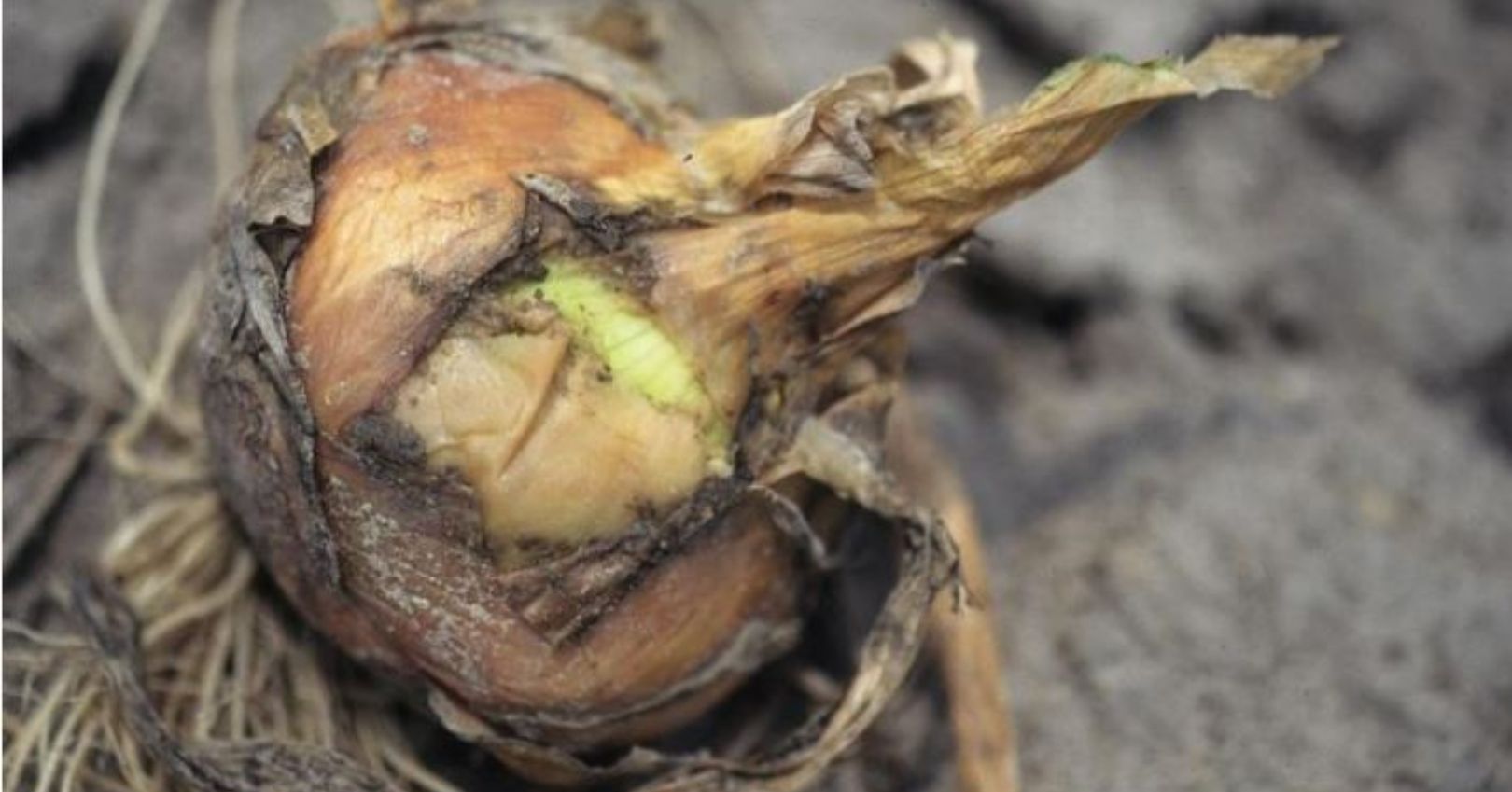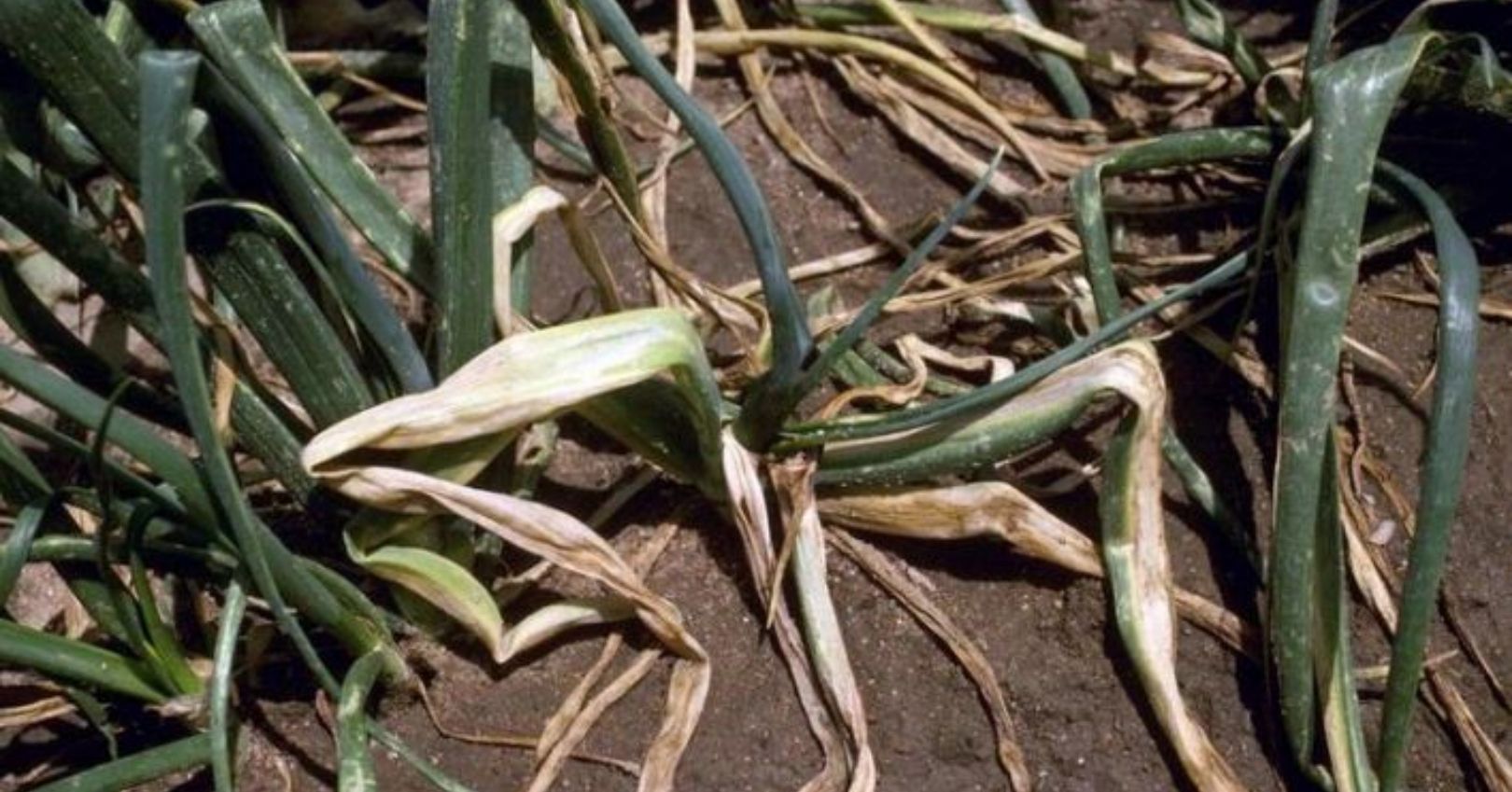Bacterial Soft Rot


Casual Agent
Bacterial soft rot in onions is caused by the bacterium Pectobacterium carotovorum. The bacteria affect onions in storage.
Symptoms
Bacterial soft rot of onions usually goes unnoticed until after harvest. The pathogen spreads from the neck down into the bulb. The water-soaked tissue later disintegrates into pulp. Decay does not spread readily from scale to scale, rather it completely rots a few scales while the rest of the bulb remains intact. It can be detected by squeezing the bulb until watery fluid is exuded. A foul odor is typically associated with the liquid.
Disease Cycle
Soft rot begins in the field before the onion harvest. P. carotovorum enters through existing wounds and aged tissue during moist conditions. Onion maggots contribute to disease spread by creating wounds on the bulb. The bacteria may also persist in the onion maggot larva’s intestinal tract and can be moved to a different site during the adult stage. Wound entry also occurs from hail damage, sunscald, freezing, and mechanical damage from harvesting equipment. P. carotovorum thrives in moist conditions.
Management
- Control onion maggots. Onion maggots contribute to bacterial infection by creating wounds.
- Allow the tops and necks of the onions to dry out as much as possible before topping. When using mechanical toppers, aim to prevent as much bruising as possible. This will prevent bacterial movement.
- Cure bulbs thoroughly to allow outer scales and neck tissue to completely dry.

